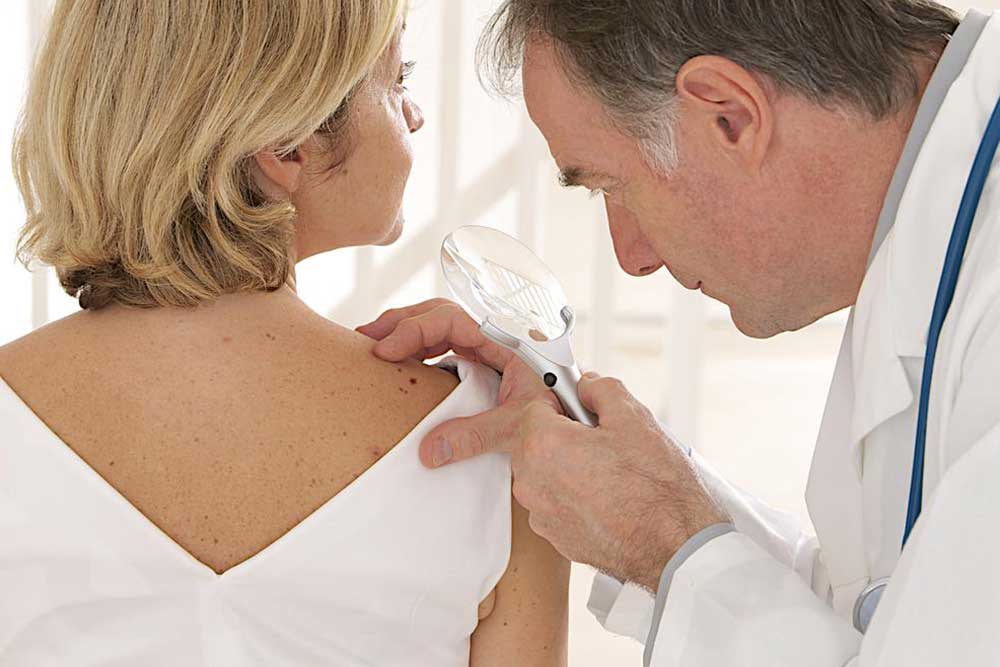A Comprehensive Guide to Squamous Cell Carcinoma: Symptoms, Causes, and Prevention
This comprehensive guide explores squamous cell carcinoma, highlighting its symptoms, causes, risk factors, and prevention strategies. Early detection is emphasized for effective treatment and improved prognosis, especially for those with high-risk factors like sun exposure and immune suppression. Understand how UV radiation damages skin cells and learn protective measures to reduce the risk of developing this prevalent skin cancer. Regular skin checks and prompt medical attention are essential steps in managing and preventing squamous cell carcinoma.

Squamous cell carcinoma (SCC) is one of the most common types of skin cancer, affecting millions worldwide each year. Originating from the squamous cells located in the middle and outer layers of the skin, SCC presents a significant health concern due to its potential to grow rapidly and metastasize if left untreated. While initially it may seem harmless, neglecting proper diagnosis and treatment can lead to severe complications, including tissue invasion and secondary infections.
Identifying the Symptoms of Squamous Cell Carcinoma
SCC often develops in sun-exposed areas of the body such as the face, ears, neck, lips, and hands. Recognizing early signs is crucial for successful treatment and better prognosis. Common symptoms include:
A firm, raised, red bump that may feel rough or scaly to the touch
A persistent sore that does not heal, often with a scaly or crusty surface
A new ulcer or sore that recurs in the same area, sometimes appearing on scars or previous skin injuries
A rough, scaly patch around the lips or other body parts, which may ulcerate over time
A red or pink lesion inside the mouth that can cause itching, soreness, or discomfort
In addition to visible skin abnormalities, some patients may experience pain, tenderness, or bleeding in affected areas. The signs may vary depending on the lesion's location and size, emphasizing the importance of routine skin examinations and prompt medical consultation whenever abnormalities are detected.
Understanding the Causes of Squamous Cell Carcinoma
The primary cause of SCC involves genetic mutations within the skin cells. These mutations disrupt the normal process of cell growth and division, leading to uncontrolled proliferation of abnormal cells. Normally, skin cells regenerate through a balanced process where old or damaged cells are replaced by new ones. However, mutations in the DNA interfere with this process, resulting in abnormal cellular growth which may form tumors.
This process is often accelerated by exposure to environmental risk factors. Chief among these is ultraviolet (UV) radiation from sunlight and artificial tanning devices such as tanning beds. UV rays damage the DNA in skin cells, causing mutations that can initiate cancer.
Interestingly, while sun-exposed areas are the most common sites for SCC, cancers can also develop on less exposed regions of the skin. This suggests that factors beyond UV radiation, including genetic predisposition, immune system suppression, exposure to carcinogenic chemicals, and chronic skin inflammation, also play significant roles in SCC development.
Key Factors Increasing the Risk of Squamous Cell Carcinoma
Multiple factors can elevate an individual's risk of developing SCC. These include:
Excessive sun exposure: Prolonged exposure to UV radiation is the leading cause, especially in fair-skinned individuals.
Tanning beds: Artificial tanning significantly increases UV exposure, raising cancer risk.
Older age: The likelihood of developing SCC increases with age due to cumulative sun exposure over the years.
Fair skin, light hair, and eye color: Lighter skin tones offer less melanin protection against UV damage.
Immunosuppression: Conditions like HIV/AIDS or long-term use of immunosuppressive medications can impair the body's ability to detect and destroy abnormal cells.
History of skin cancer or precancerous lesions: Past diagnoses elevate future risk.
Chronic skin injuries, scars, or inflammation: Repeated trauma may contribute to carcinogenic changes.
Exposure to chemical carcinogens: Such as arsenic or industrial chemicals.
Early detection and preventive measures are vital, especially for individuals with increased susceptibility. Regular skin checks, protective clothing, broad-spectrum sunscreens, and avoiding tanning beds can significantly reduce risk. Understanding these causes helps in early diagnosis and effective treatment, ultimately saving lives.
Despite being less aggressive than some other skin cancers like melanoma, SCC can invade deeper tissues and metastasize if not treated promptly. Medical professionals recommend seeking advice upon noticing suspicious skin lesions to prevent progression and complications.
In conclusion, awareness of the symptoms and risk factors associated with squamous cell carcinoma is crucial for early intervention. Maintaining good sun safety habits and seeking medical advice when abnormalities appear can significantly improve outcomes and reduce the threat posed by this common yet potentially serious skin cancer.





